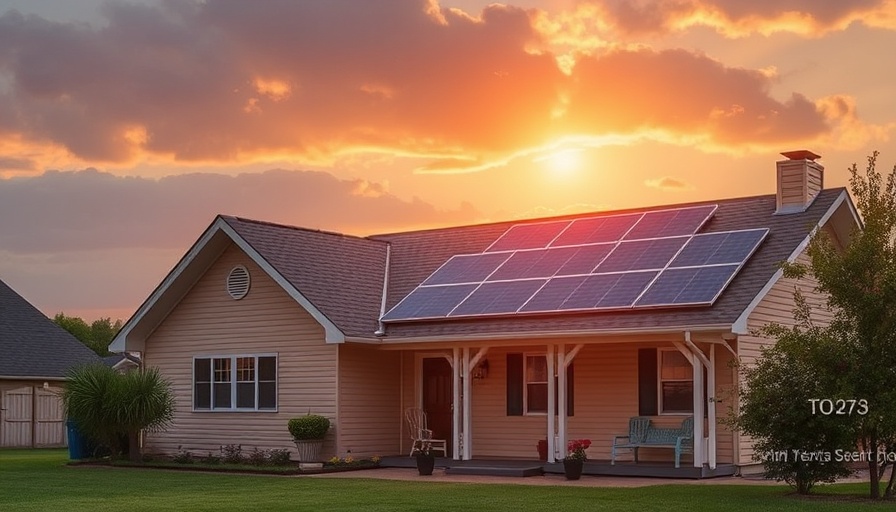
Understanding Comparisons: Tesla Solar Roof vs. Traditional Panels
As homeowners increasingly seek out sustainable energy solutions, the Tesla Solar Roof's pricing structure prompts critical examination. Currently, it’s priced at $6-8 per watt, significantly higher than the more conventional solar panels, which average around $3 per watt. This stark difference raises inquiries about the long-term value and feasibility of such integrated solar technology.
A Deeper Look into Costs
The cost disparity isn't merely a surface issue; it reflects underlying factors such as installation complexity, design, and the technology itself. Tesla's solar shingles aim to blend into the aesthetic of a home, an attractive feature for many homeowners looking to maintain curb appeal. However, this innovative approach comes at a premium that some may struggle to justify when comparing it to traditional panels that provide functional performance at a lesser investment.
Are Tesla Solar Roofs Worth the Investment?
Exploring the ownership benefits is crucial for decision-making homeowners. An integral advantage of the Tesla Solar Roof is its dual functionality as a roof and a solar energy generator. Traditionally, solar panels require the existing roof to have another layer added, which can complicate installation and the overall visual appeal. Tesla argues that the higher upfront costs can be offset by increased home value and energy savings over time, especially as electricity rates continue to rise.
The Climate Factor: Why Consumers Prioritize Sustainability
For many eco-conscious homeowners, the financial aspect is often secondary to environmental benefits. The ability to potentially reduce one's carbon footprint significantly can align with personal values about sustainability and clean energy, promoting alternatives to fossil fuels. Thus, while Tesla’s price point may seem daunting, many consumers may view it as a worthwhile investment in future-proofing their homes against increasing energy demands.
Independent Perspectives: Industry Experts Weigh In
Interestingly, opinions diverge on the appropriateness of such investments. Some experts argue that while Tesla’s technology is revolutionary, traditional solar panels solidify their place in the market, especially for consumers looking for a more affordable initial outlay. Others claim that the stylish appearance and integrated design of Tesla’s offering justify the increase in cost, especially in competitive real estate markets.
Future Insights: The Evolving Solar Market
As the industry advances, we can anticipate variations in price structures for both traditional solar panels and integrated solutions like Tesla’s. With impending technological innovations and potential price drops in solar energy solutions, the difference in cost may begin to close. Homeowners aiming for energy independence should keep a pulse on these trends to make an informed decision, weighing both immediate costs against long-term savings.
What Does This Mean for Homeowners?
The decision to invest in solar energy, whether through Tesla’s roof or traditional panels, is deeply personal. Homeowners should assess their financial standings, risk tolerance, and commitment to sustainability before making a decision. While traditional solar panels may offer immediate ROI in terms of affordability, the Tesla Solar Roof may provide unique long-term benefits that cater to specific homeowner values.
Taking the Next Steps
As homeowners navigate these options, a thoughtful approach is warranted. Engaging with local energy experts, obtaining various quotes, and understanding not just the immediate costs but also the long-term savings, can help clarify the best choice. The future of energy generation is bright, but individual homes must choose a path that suits their preferences and financial goals.
 Add Row
Add Row  Add
Add 



Write A Comment